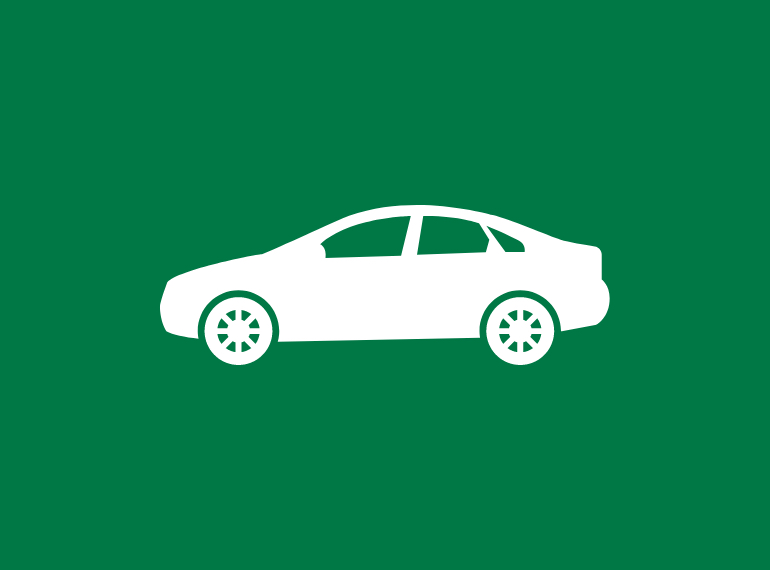So you want to buy a Triple-M car – Part 2 – The Midgets
By Philip Bayne-Powell
The D-type
This car benefited from the new chassis as fitted to the C-type, but the M-type engine was carried over from the M-type unchanged. This car was basically a 4-seater M-type on a new chassis.
Chassis
The chassis on these cars was similar to the C-type but with the channel side rails now riveted to the crosstubes. The wheelbase was initially 7 foot, but later cars were 2 inches longer. The weight of the car was over 13cwts, a 30% increase on the M-type; as a result, these cars are not great performers, even though the engine was uprated to the M-type 12/12 specification mentioned above.
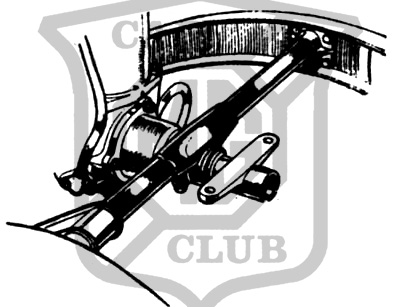
The 8” cable brakes were the same as the M-type, with the shrunk on aluminium cooling fins, and operated as before from a crosshaft behind the gearbox.
Engine
This was the same 847cc unit from the M-type, still producing only 27 bhp, and used the same valve timing as that car, rather than the improved, C-type, valve timing. It had the new three point mounting, as pioneered by the C-type, although it retained the M-type rear engine mount, as opposed to the cross-tube gearbox rear mounting of the C-type.
Gearbox
The gearbox was also the same as the M-type with only three gears; however a nice remote gear lever was fitted to help compensate! As with the M-type this box was bolted to the back of the engine for support.
Back axle
This was the same construction as the C-type, with an 8/43 diff ratio
Electrics
These were now uprated to 12 volts at last, but still need additional fuses to be fitted to cover all systems.
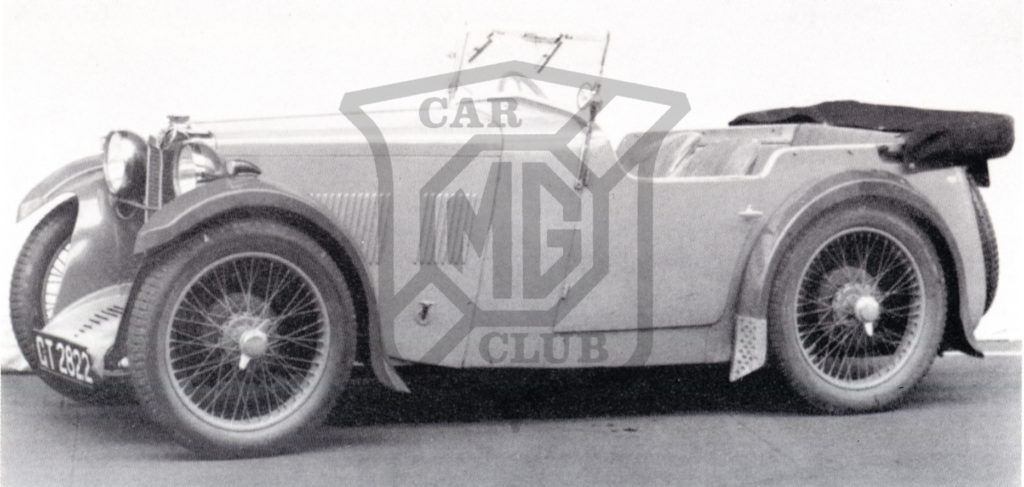
Body
This was a four seater, although a 2+2 would be nearer the truth. It featured a rounded tail, rather than the pointed tail of the M- and C-types, now with the petrol tank set inside the rear of the body, and the spare wheel mounted vertically on the back. Salonettes were also offered, but weighed another hundredweight, further reducing the performance! Five cars were sold as chassis only, and we know that Jarvis produced at least one car; however it was so slow it went back to the works to have a blower fitted in the first month!
The new “helmet” wings were as used on the later M-types. Full weather equipment was now more usable. An ammeter, speedo and a Maltese Cross oil pressure gauge were fitted. This oil gauge had four segments, which showed white if the oil pressure was OK, or red if it was low. Very confusing, as it didn’t really tell you much about the state of the engine, so most cars have fitted a later gauge indicating the actual pressure figure. The windscreen was the first time a fold flat screen had been fitted.
Prices
Only 208 of these cars were produced, so they are quite rare, especially as some have been made into C-type replicas. A good running car would be around £11-12,000. These cars have a top speed of 45-50mph; the saving grace is that these cars look very good with their “helmet” style wings, and have an enthusiastic following, with their own sub group within the Register.
The J-type
The next model was a great improvement, and boasted a new engine with a crossflow head, twin carburettors, but with the same weak two-bearing crank of its elders. However the overall weight had been reduced to 123/4cwts, making it a lively car, which was used extensively and successfully in the trailing scene, with a small number being raced successfully.
Chassis
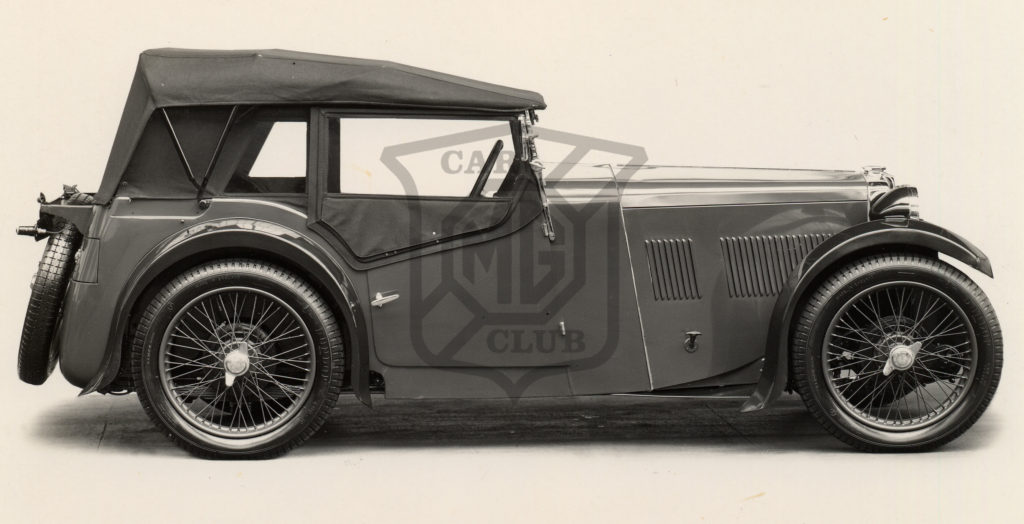
This was similar to the later D-type, still with the 8” brakes. The steering box was changed from the nice Adamant one used previously, to the Marles Weller box, which uses hemispheres in the follower, which wear and cause poor steering. The propshaft was now fitted with decent universal joints, like the D-type, discarding the fabric couplings used on the M-type.
Engine
This was still an 847cc o.h.c unit, but now boasted a new MG-designed cross flow head. The camshaft had far more overlap than the D-type, and consequently produced 36 bhp at 5500rpm. It still used the same three point mounting as the D-type, with the rear of the engine supported on brackets off the chassis. Twin SU carburettors were now fitted, on the offside, but the exhaust manifold was still a one piece casting collecting all exhausts into one pipe.
The crank was still the same 2 bearing crank as before; this was prone to breakage and time has not improved the problem, and is best replaced if rebuilding an engine. They are readily available and also counter balanced. The water manifold now collected water from three positions on the nearside of the head, ensuring that the heat from the combustion chambers was quickly taken to the radiator, rather than the M- and D-types, which only had a water outlet at the front of the head. No oil filter or water pump was fitted as yet.
Gearbox
This was a Wolseley-derived 4-speed box, and is pretty robust, being designed more for trials work than every day use. A nice cast ali remote control was fitted, bringing the gear lever close to the left hand for quick changes.
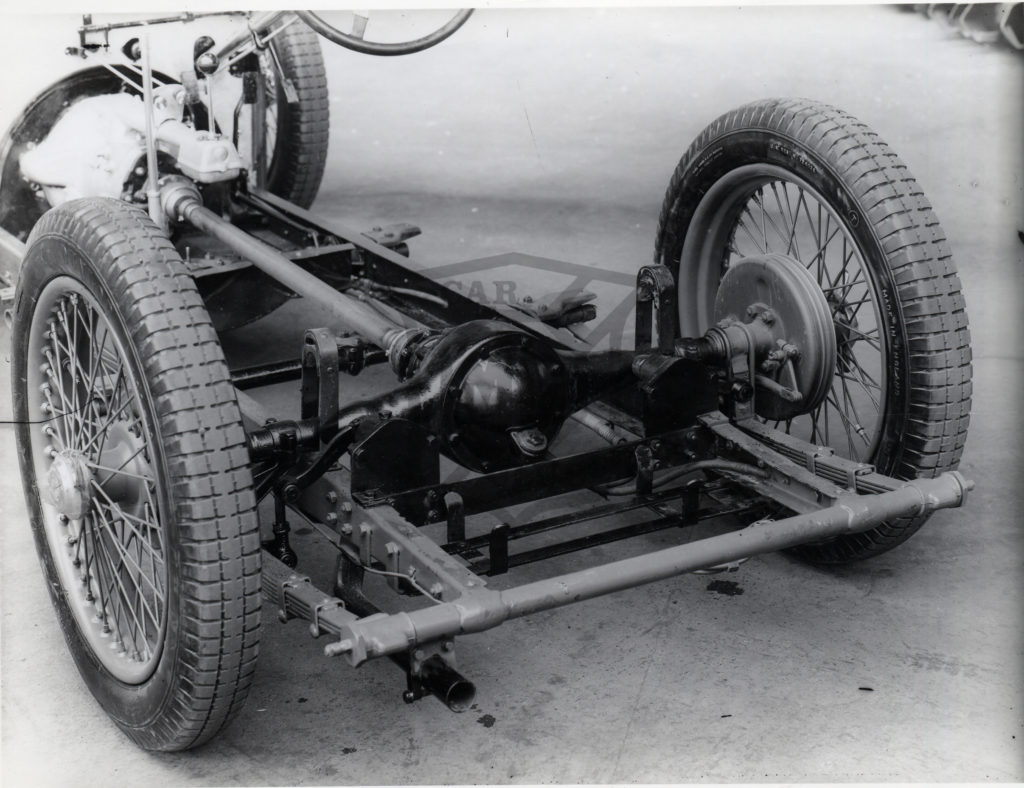
Back axle
This was the same as the D-type, and used the same 8/43 diff,
Electrics
These were now established as 12 volts, with a better more comprehensive fuse box. Originally an SU Petrolift pump was fitted, but these have a reputation for being unreliable, and will, almost certainly, have been replaced with the later SU pump. Headlights were originally 8” units, either Rotax or later Lucas manufacture, but these are now difficult to come by, so a variety of later headlamps get fitted, some of which are quite unsuitable and ruin the look of the car. The fusebox/cut out was fitted with three fuses plus a dynamo field fuse.
Body
The 2-seater body was the first with the spare wheel and petrol tank fitted on the back. There was a bit more room in the cockpit now, helped by cut-away doors, allowing the elbows to project outside the body. A decent hood was also fitted which actually was able to keep out most of the rain, as well as allowing the occupants to travel in reasonable comfort. Cycle wings all round gave a light car, but mud gets thrown up by the front wheels. From 1934, cars were fitted with swept wings and running boards; these make the J2 look really attractive, as well as keeping the mud from getting everywhere; not many of these were built.
Apart from the two-seater J2, a four-seater, (the J1), was offered which had a rounded tail like the D-type, and so no external slab tank, which was therefore not so attractive. There was also a pretty closed version called the salonette, which weighed in at 141/2cwts! A supercharged 750cc version with a front mounted blower (the J3), was also offered for those wanting a quick road car, but only 22 of these cars were made.
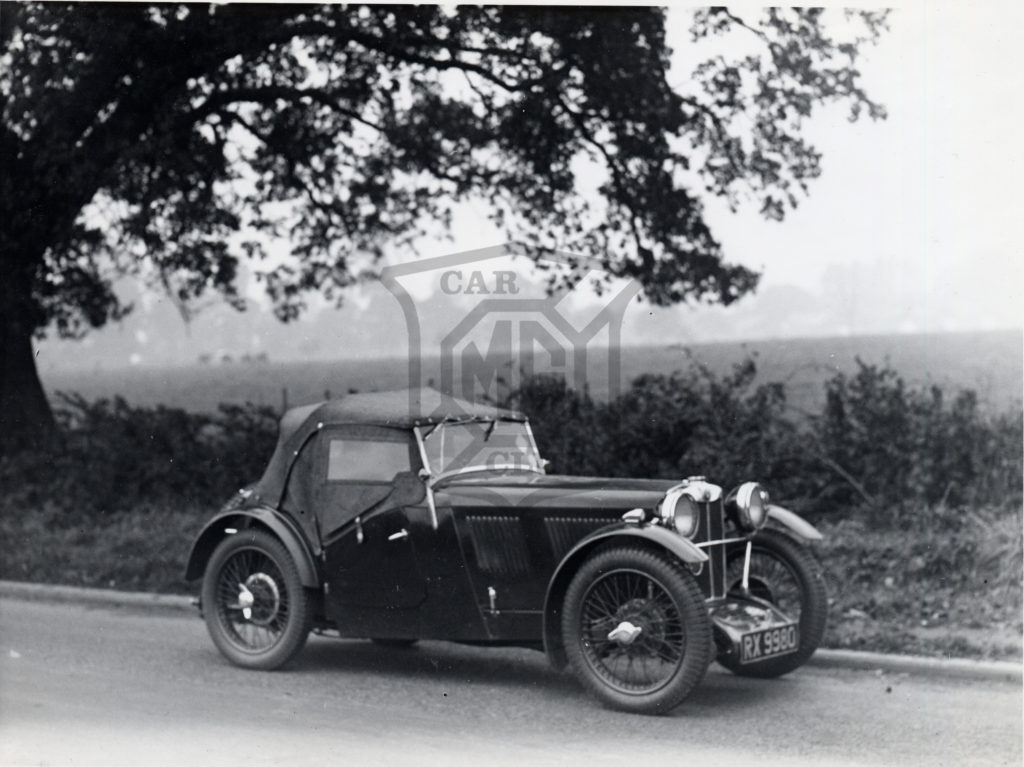
A 750cc road-racing version (the J4) was produced for those wanting a quick track car, and this took over the racing baton from the C-type. The bigger 12” brakes were fitted originally, and the body is, in effect, a doorless version of the standard car, with a nice external exhaust system. These J4s had an engine that was too powerful for the chassis, and many have turned over in racing over the years.
A very few chassis (23) were sent to other coachbuilders, as there was not enough extra power to cope with a heavy body, and being a small car did not give much scope for producing something different, however R.E.A.L. produced a very attractive 2 seater, one of which is now being slowly restored.
Prices
The standard sports J2 is the very epitome of sports cars of the age and thus is very popular, and with 2494 cars made, comes up regularly for sale. A really good, concours, cars can fetch around £20,000; however a good running car can be had for about £5000 less. The 4-seater J1 is not so popular, and even a good one struggled recently to sell at £14000. The salonette is now rare, as most have had the heavy body thrown away (or rotted out!), and a new 2-seater body fitted; 117 of these salonettes were originally built, but if one comes up for sale it is likely to be more than £18,000, due to its rarity.
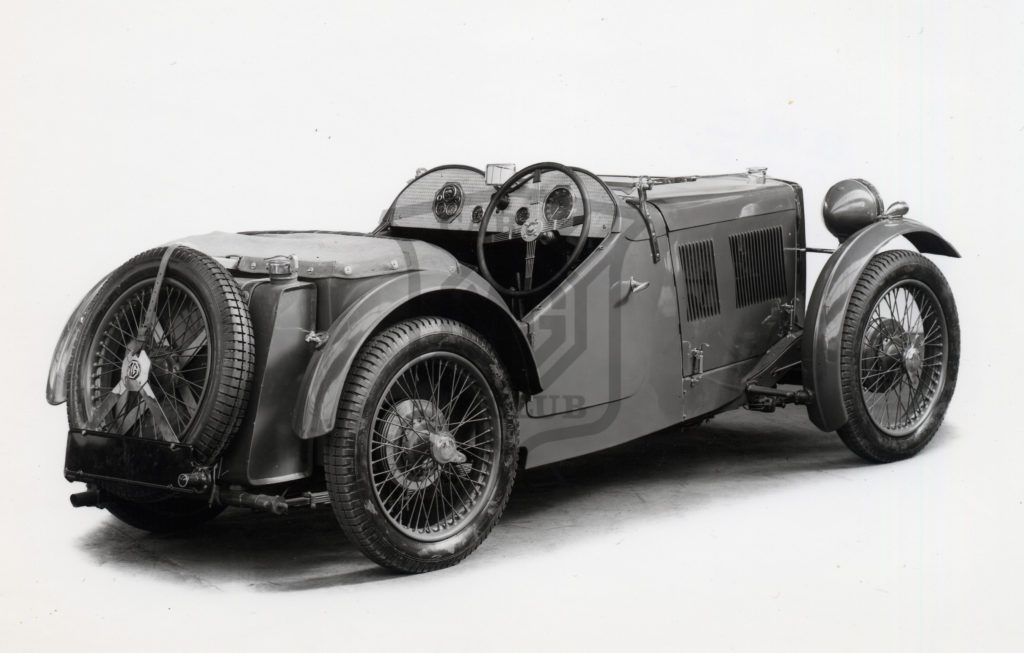
The J3 is also a rare car, as only 22 genuine cars were built; some of these have competition history and so their price could be up to 50% more than the standard J2, and could fetch around £30-40,000. Only 9 of the J4 road racing cars were made, so they command a high price for those wanting one, and most had a very comprehensive racing history to add to the provenance, and are likely to cost around £100,000. Several J4 replicas have been made, as most of the parts are the same as the J2, and these come up regularly, but these should be carefully checked out to ensure they are not being sold as the real thing.
P-type
Here was a more civilised car with its swept front wings. However the weight had gone up by 2cwts, which meant it was not as lively as the J-type. The trials drivers threw away the heavy wings to get the weight down, and fitted cycle wings; there are some sporting P-types around with this arrangement. Many of these cars were used for trials work and some were fitted with side mounted superchargers to increase the power and torque; the works backed “Cream Cracker” and “Musketeer” teams were very successful. A team of three all women cars competed in the 1935 Le Mans 24 hour race, and all finished.
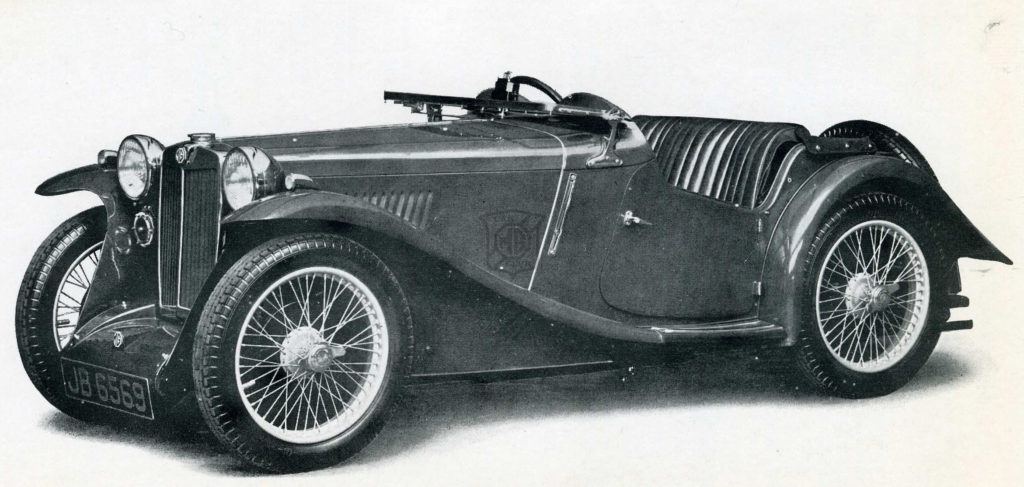
Chassis
This was an improved J-type ladder design, with an extra cross member behind the rear trunnions. The brakes had been increased from the previous 8” size to 12”, to help stop this heavier car. The steering box was changed later in the run from a Marles Weller to a Bishop Cam unit, which also needs to be kept in tip top condition to prevent wear and slack at the steering wheel.
Engine
The 850cc engine was considerably improved, with a new 3-bearing crankshaft, and bigger camshaft, but with the same valve timing as before, producing the same 36bhp as the J-type previously. A new four-branch exhaust manifold was fitted on the nearside of the crossflow head, opposite the twin carburettors on the offside. A proper oil filter was now fitted, with a removable felt filter, which was mounted on the nearside of the block.
P-type heads sometimes crack between the valves, but can be repaired by fitting valve seat inserts, which are pretty reliable these days, or by welding if the seat erosion is bad. The later PB engines were bored out to 60mm giving a 939cc capacity, and a second breather for the block was fitted.
Gearbox
This was similar to the J-type, but now fitted with a chassis mounted cross tube forming the rear support on the engine and gearbox assembly. It came with lower first and second gears. It was called a “twin top” gearbox as 3rd and top were very close, and very handy for dropping down a gear to overtake slower cars, but left a large gap between 2nd and 3rd gear.
A sturdier octagonal cast aluminium remote control was fitted, with a bracket incorporated for the choke and slow running control rods. The 2nd gear was too low for road work, being chosen to suit the trials events, but when the PB came out it had a new 1st and 2nd gear (which reverted to the same ratios used by the J2), and was a great improvement.
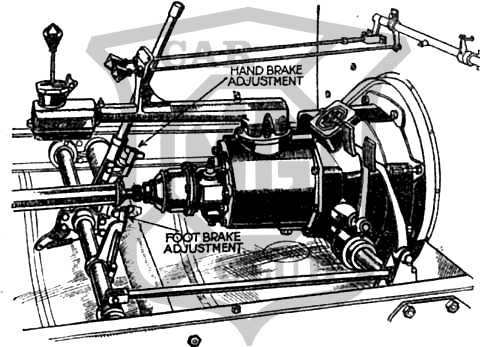
Back axle
This was the same as the J-type with the same 8/43 diff ratio, although 8/41 and 8/39 ratios were also available. The diff carrier was now made in stronger steel, rather than the aluminium of the J-type, and also used a 4-star planet wheel arrangement. Straight cut gears were often fitted for the racing boys; these latter are not readily available, but the standard spiral bevel crown wheel and pinion sets are. Oil leaks, usually from the nearside hub are a common problem, despite modern oil return seals being fitted in the ends of the axle tube. The result being that the leaking oil gets onto the brake linings reducing the braking effect dramatically! A different oil seal has been developed for the T-types, which is now being made available for the Triple-M cars, which has proved to resolve this problem.
Electrics
The petrol pump was now changed from the unreliable (and superseded) SU Petrolift pump to the more familiar SU L-type petrol pump. A bigger fuse box was fitted with 5 fuses plus the field fuse, and a holder for 5 spare 25 amp fuse, and also 2 spare field fuses held in a neat clip in the cover. Semaphore trafficators were now fitted, located in the sides of the scuttle. The original slim trafficators are very difficult, (and expensive), to come by these days. Lucas 8” headlamps were now fitted, and cast octagonal sidelights replaced the round ones used on the J-type. The three-brush dynamo was still being used, and is often a source of trouble, so modern two-brush dynamos are now being fitted which look very similar to the original, and are far more reliable.
Body
P-types were produced in 2 and 4-seater versions, although the latter was heavier it could take more luggage for 2 people. My first car was a 4-seater P-type and in 1963 I took it on holiday all the way to Rome and back. The dashboard was updated with a central rhombic panel incorporating a mileometer, a horn/dipswitch and push pull switches. A rev counter was fitted in front of the driver and incorporated speeds in top and 3rd inside the rev figures.
The spare wheel was now mounted on a substantial triangular cast bracket bolted direct to the chassis, instead of being part of the petrol tank strap fitting. In addition to the open cars, a closed coupe version was offered, called the Airline, because of its streamline coachwork; only 42 of these cars were built, but are greatly sought after these days. Only a few coach built bodies were built on the P-type chassis.
Prices
The P-type doesn’t seem as valuable as the J-type, with prices a few £1000 less than the earlier car. The 4-seater cars are also not so sought, after due to their heavier bodywork restricting the performance. The pretty Airline Coupe very rarely comes up for sale, but if you are determined to get one, they will set you back about £40,000. Many cars have been “improved” by increasing the compression ratio, or supercharging; however it is best to steer clear of these, unless you can find out how well the improvements have been done.
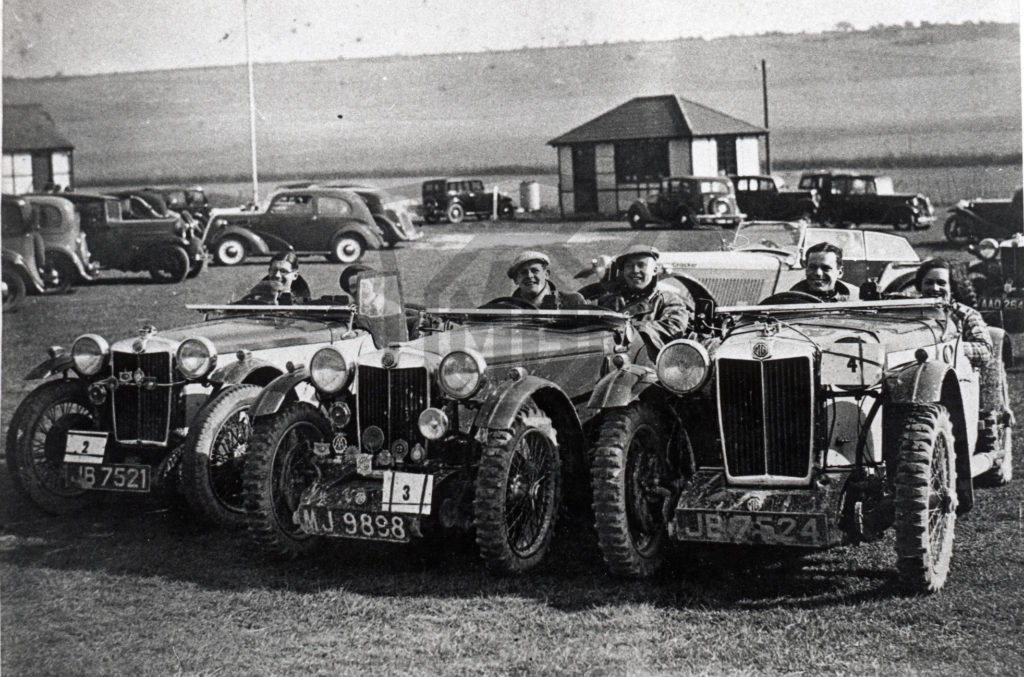
Spares Availability
The spares situation for these cars is getting healthier every day, with new parts for all cars being produced by the dealers or the various cottage industries. Fully machined blocks are available around £1000, and improved fully counter balanced cranks are also around £1100. Nearly every single item for the engine is available including uprated camshafts. Chassis parts are also available and some people have built up a completely new, reproduced, item; however, this is not accepted by the Register, since it is a copy, and not the original produced by the MG Car Co. New front and back axles are not yet available. New brake drums, shoe, pivots and camshafts are readily available, as are the brake cables themselves.
The correct instruments are available but are expensive. Proper headlights can be found at Autojumbles, but the Rotax ones for the J-type are like “hen’s teeth”, these are occasionally made up new; but a period Lucas unit can be found that is a close match. Half shafts, hubs and crown wheel and pinions are readily available to keep the back axle going. Complete timber body frame tubs are made by several people, either skinned or unskinned. However some M-type bodies do not reproduce the correct subtle shape of the original, with the tail being too droopy or upright; the 75th Anniversary line up at Silverstone in 2003 brought this home to a lot of people!
Originality
This is always a thorny subject, but generally speaking, it is better to have a car which is close to the original, than to take cheaper short cuts when restoring a car. I personally feel that if you are going to all the trouble to restore a car it only takes a little bit more effort (and money) to do it properly. I object to modern oil filters with spin off canisters being fitted to Triple-M cars.
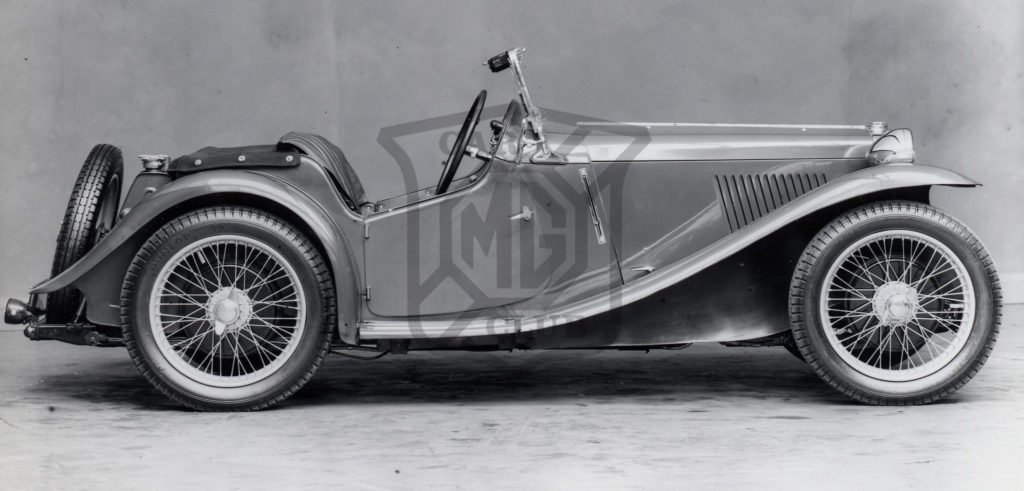
Instruments should be checked for correctness, as these are expensive to obtain. It is important to check the chassis number on the car (stamped on the offside front dumb iron knuckle), and see that it matches that on the log book. Do NOT rely on the car’s brass guarantee plate, that is only screwed onto the firewall; anyway these are being reproduced and fitted with any number stamped on them which gives Registrars and historians a headache.
Many people build up a Special for racing and hill climbs out of spares that they have lurking in the garage, but these do not sell very well when the owner decides to move on. They are after all one man’s interpretation of what he wants from his car.
I think it is very important to remember that we are only short-term custodians of these cars, which are now becoming equivalent to works of art, and as such we should be prepared to preserve the MG heritage. You wouldn’t put new legs on a Chippendale chair! It is a shame that so many saloons have been lost to open tourer bodies in rebuilds.
Costs
If you are thinking of buying a restoration project you need to consider the cost of the work involved. An engine rebuild on a Midget by one of the experts will cost about £6000-£8000, depending on condition. Other expensive jobs are the chroming, instrument overhaul, upholstery, hood and painting, which all need to be done by experts. These costs are the same for all Midgets, and so will be a higher proportion of the finished value for the cheaper cars.
It is not cost effective to buy a basket case and expect to get your money back at the end, if you need to sell. This however doesn’t apply to the rarer and historic models, as their finished value is sufficiently high to cover the restoration costs. When buying a basket case you need to check out if everything is there; make a list of the missing items and use this to negotiate the price down; some items are not easy to come by.
Tyres
People often worry about the availability of tyres, but there is a pretty good range now. The earlier cars were fitted with 4.00×19” tyres, which are available from Dunlop/Excelsior, Michelin, and a recent new manufacturer, Blockley, who produce an original looking three-block pattern tyre. Many people prefer the Avon SM sidecar tyre with its 3-stud pattern.
Later cars can benefit from fitting the bigger 4.50×19” tyre, and these are also available from Dunlop/Excelsior, Firestone, Waymaster, and Blockley. The N-type has 4.75×18” tyres; these are available from Dunlop/Excelsior, Waymaster, and Michelin. Blockley make a 4.50/5.00x 18” which they say is very similar to the original tyre. If you didn’t know the name of Excelsior, they are made in India using the old Dunlop mould, and thus the same tread pattern.
Read part 3 to explore the 6-cylinder models and touch on blowers and the pros and cons of buying a fully restored car or a “basket case”.

 MG Car Club
MG Car Club